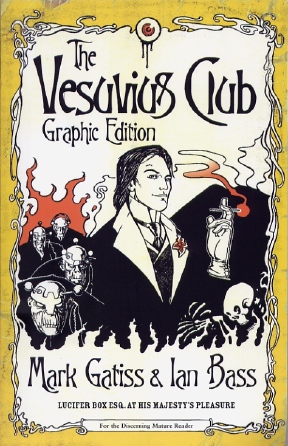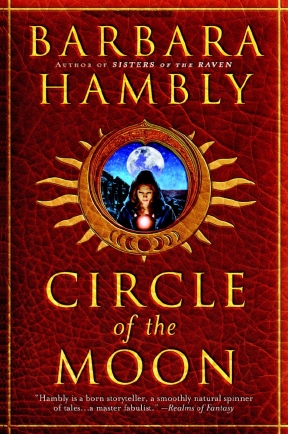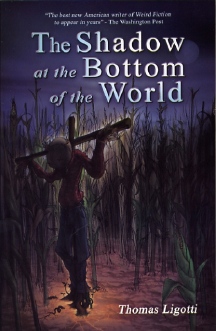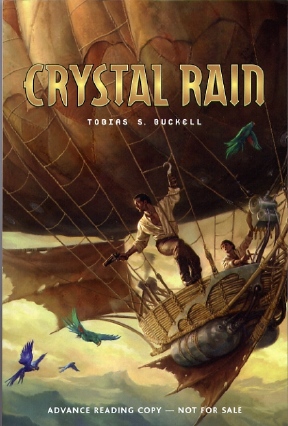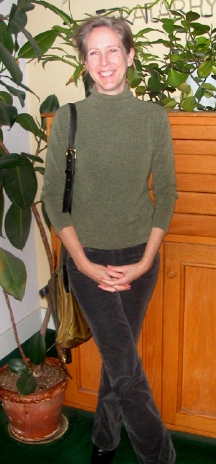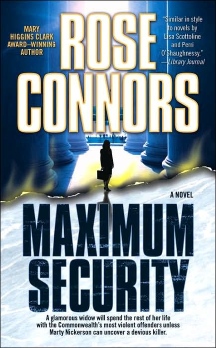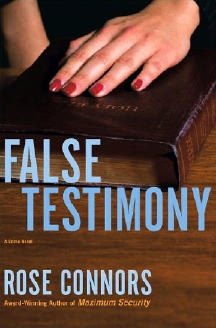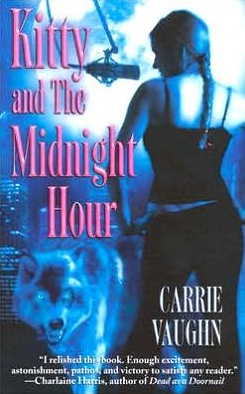|
|
|
This Just In...News from the Agony Column
|
11-04-05: Mark Gatiss and Ian Bass 'The Vesuvius Club: Graphic Edition' |
|||
A
Graphic Graphic Novel
Well, maybe I sort of do. I mean, really, whuzzat? In this case, it's no great leap from the novel 'The Vesuvius Club' to the graphic novel. After all, Ian Bass had already provided ample illustrations for the original novel, illustrations that in retrospect were quite perfectly suited for the graphic novel version. Of course, hindsight is always 20 / 20. As I suppose it was on the part of the publishers as well. One can imagine the wheels turning as they gazed at the hardcover and the paperback, and even the US edition, just released. Finally! What else could be done to milk the franchise, even before another title is added? And thus, from Mark Gatiss and Ian Bass, you get 'The Vesuvius Club: Graphic Edition' (Simon and Schuster UK ; November 7, 2005 ; £12.99). Fortunately, this is a rather a perfect example of commerce serving the needs of art for friggin' once. Because, frankly, we need the Graphic Novels of Lucifer Box. Why? Well, clearly, Bass was not done illustrating this story, and we're all the richer for it. If you think for some reason that you did not need to see purple zombies, then you are clearly sadly mistaken. And you know for all the term "graphic novel" is bandied about and for how supposedly adult the art form is, most of the graphic novels I've seen have never been, well, graphic. At least not in that way. Now generally, I have to say I'm thankful for that. For my taste, sex in graphic novels tends to be off-putting when it intends to be erotic. But there's none of that nonsense here, only good old-fashioned shock-the-living-shit-out-of-you value here. You can probably read those little words on the front cover. You know. "For the discerning mature reader." They're not kidding and this is probably something you at least want to glance carefully through before handing it off to your sixth-grader. Unless you've got an awfully mature sixth grader, and in that case, well, you've got my sympathies as well as that mature-ish kid. But beyond the "Yikes!" moment in 'The Vesuvius Club', which should probably come as no surprise to those who read the book, there's a lot to like in this graphic novel. The superior lettering and simple graphic design make it a damned sight easier to read than many I've seen. The inside covers include new period advertisements in the style that adorned the original hardcover. Plus it includes the cover of the May 1939 Issue of "Sleuth Comics", assuming that Gattis & Bass have cooked up the old Acme Time Machine and hurtled themselves back into history to write it. Otherwise it's a big ol' very entertaining fake, and it promises precisely what we're all waiting for; more adventures of Lucifer Box. Of course, the movie, the musical, the stage production, and the opera have yet to be produced. Gatiss has also written for the new series of Doctor Who. Yes, the monsters look no better now than did that eyeball costume with the curtains hung around it. But clearly they put their money where it counts; great actors and great scripts. And it's done quite well. So there may be a bit of a wait for "ZOMBIE TERROR!" Dont hold your breath -- presuming you have breath to be held. |
|
11-03-05: Barbara Hambly's 'Circle of the Moon' |
|||
| Completing
the Circle
by Terry Weyna
And sure enough, here it is: 'Circle of the Moon' (Aspect, $13.95, 470 pages, September 22, 2005). The male-oriented world portrayed in Sisters is being forced to face a most uncomfortable fact: men no longer have magical powers, but women seem to be gaining them. The women do not know how to use their powers, however; the spells that the men used to weave do not work for them in the same ways, and they must create a new form of magic as they go along. In the meantime, they are joined in a fight to preserve the kingdom from a rebellion, facing a strange plague of madness in the desert, and trying to control water monsters that have arisen from the depths of the Seven Lakes. The bottom line is that if the women do not learn how to properly wield their magic, they and their husbands, fathers, brothers and sons will all die. Shaldis, who is the only woman ever trained in the academy formally reserved for male magicians, is our eyes and ears on this world. She is facing her own trials, as her family attempts to re-enslave her, now that the academy is bare of students. She is a very young woman forced to deal with unreliable and unknowable allies, with her only dependable help being Summerchild, a favored concubine of the king. Shaldis and Summerchild are everything a reader could want in the way of heroines, firm in their convictions, willing to take action according to their consciences and their wits in a world where they are operating on their best guesses. Hambly creates a believable, fantastic and colorful world with appealing characters to delight the heart. Its a perfect combination for a lovely days reading. |
|
11-02-05: Thomas Ligotti Stands In 'The Shadow at the Bottom of the World'; Tobias S. Buckell Waits For a 'Crystal Rain' |
|||
For
A Few Words More
For the most part, this is sort-of "Thomas Ligotti's Greatest Hits". And Ligotti has been around long enough now that one can actually experience a sort of nostalgia about reading his work, thus the "Greatest Hits" description. Alas, I cannot experience nostalgia about having bought the Silver Scarab Press version of 'Songs of a Dead Dreamer'. But that UK paperback, the subsequent Arbor House editions...I remember them all quite well. I bought the UK paperback version from Jesse Hosrting, who was at the San Fernando branch of Forbidden Planet. The blazing hot LA sun, the relentless smoggy haze, and endless strip mall street where the store was located was itself a nightmare, in completely opposite colors from those used by Ligotti. Not matter. One can endure a lot to read the deliciously well-chosen words of Thomas Ligotti. And re-read them. More than most modern authors, Thomas Ligotti is the kind of author who you can re-read just to hear those words again, either in your mind, or better yet, spoken aloud. If ever there were stories meant for reading aloud, then those are the stories of Thomas Ligotti. You'll read a lot how Ligotti is like Edgar Allen Poe, or H. P. Lovecraft, and that's not a bad description as far as it goes. I'd suggest that he has a lot in common with Borges in his attempts to bend reality, and in his scholarly / literary inclinations. Ligotti is an author whom one reads and thinks: "Instant classic. Timeless writing." Anything you read, anyone who reads. Ligotti is that good. So readers want to know what's what in 'The Shadow At the Bottom of the World', eh? I sure did. Here's the scoop. You start with a two page forward by Douglas Anderson, pages 8 and 9. Then on page 10, you get a six-page Introduction, anexcerpt from Ligotti's forthcoming book 'The Conspiracy Against the Human Race: The Horror of Life and the Art of Horror'. It's titled 'Horror Stories: A Nightmare Scenario'. This is the kind of literary criticism that includes phrases like, "...we might consider the plot of a traffic accident..." Apparently 'The Conspiracy..' is a book-length essay fromm Ligotti and is forthcoming from Mythos Books. Very nice, great news. Pages 17 through 243 offer these selections from 'Songs of a Dead Dreamer': 'Doctor Voke and Mister Veech', 'Alice's Last Adventure', 'Vastarien' and 'Doctor Locrian's Asylum'. Stories from 'Grimscribe' include 'The Last Feast of the Harlequin', 'The Mystics of Muelenberg', 'The Spectacles in the Drawer', 'The Shadow at the Bottom of the World', 'Nethescurial' and 'The Cocoons'. Stories from 'Noctuary' include 'The Strange Design of Master Rignolo' and 'The Tsalal'. And finally, stories from 'The Nightmare Factory' -- which itself includes more than a few of the previously mentioned stories -- include 'The Buingalow House', 'Teatro Grottesco' and 'The Red Tower'. Readers familiar with Ligotti's work will see a nice representation, though perhaps not everything that they would put in his greatest hits. My personal read-it-aloud-until-my-wife-asked-me-to-just-stop-please-stop is 'Mad Night of Atonement'. "Once more from the beginning; once more until the end." Damn. Music, with words and no music. The collection at hand, however, finishes up with a previously uncollected 2003 story. It's a fifteen page atypical piece titled 'Purity'. By atypical, I mean in subject, not quality. It's as top-notch as anything else in here. For me, getting that introduction from a forthcoming book and 'Purity' and just more copies of Ligotti's great stories is well worth the price. Alas, the cover is no great shakes. The art is certainly nice enough, but Ligotti deserves something more austerely terrifying. But if you'd ask me, any penny spent on Ligotti, any dollar spent on Ligotti, any amount of money spent on Ligotti is money well spent. You'll read his work, and you'll find your favorites. Chances are, they'll include every story he's written. |
|||
Wicked-High
SF
OK, I'll cop to the fact that the cover just hurtles me back to my youth, reading the Edgar Rice Burroughs Martian series, with those flying-air-boats that Frazetta did so well, the boats that inspired Lucas and generations after. Those parrots also remind me a bit of the work that this year's Hugo award winning artist Jim Burns did for the Peter F. Hamilton collection 'A Second Chance at Eden'. There's something exotic and calming, familiar and adventurous here. Tor made a great choice and I salute the (unknown-to-me-because-he's-not-credited-on-the-ARC) artist. (See below to find out who the artist is.) But as much as one might like any book's packaging, it's the prose that counts. Buckell delivers the kind of prose I like, at least. Here I stop and admit that Buckell is a reader who wrote me to tell me of the publication of his first novel. I consider that a good sign, naturally, but a good sign does not make a good book. Good writing does that. Buckell's prose in the opening sections I read had the kind of detailed musicality that sucked me in to his entertaining scenario. Nanagada is a planet of lush jungles and Wicked-High Mountains. Colonized by Earth so long ago that theyve forgotten their heritage, the world is now split into the Caribbean refugees and the Azteca. Readers can imagine that the refugees are more at home in their world than the Azteca, and that the latter are not the friendliest folks you'll meet. As the novel begins a man falls from the sky into the village culture. He takes off on foot, searching for carnival. We next met John DeBrun, whose forgotten more than he remembers, and has in his 27 years, made a nice little life for himself. He's still not sure why he's here or exactly who he is, but he is sure he's happy. At least until the Azteca send over a raiding party, and signal their intent to up the ante until they've sacrificed more people than are willing to die. Someone will have to search through the Wicked-High Mountains for an artifact that science fiction readers know most certainly exists. 'Crystal Rain' is written in nicely truncated micro-chapters to ensure page-turning delight and to help readers who suffer from many interruptions. What Tobias Buckell brings to the party that's unique is a youth spent in Grenada and The British Virgin Islands. It's a bit of a letdown that he now lives in Bluffton, Ohio, but that's got to add yet another rather exotic -- to me at least! -- flavor to the mix. At some point along the way, he snagged a John W. Campbell nomination, and he did time in the Clarion Science Fiction Writing Workshop. All this adds up to make me rather excited about this book. It's got the kind of vibe that makes me very interested in reading it. It's easy to read but has that kind of finely-turned feel that makes the reading more rewarding. Ripping yarn, alien adventure and flying boats. And oooh! Ooh! MONGOOSE MEN! So cool. Talk about putting on the ritz? How can it get ritzier than mongoose men? One hopes they have their own flying boats! Tobias just wrote to mention that the artist for his book is Todd Lockwood; you can view more of Lockwood's images at his website. Also, I forgot to link to Tobias' website, so here's that link as well. |
|
11-01-05: A Conversation With Mary Roach |
|||
Science
and the Soul
Of course, her job does involve some rather unique hazards. She went to New Delhi to research re-incarnation with Doctor Kirti Rawat. "I arrived there, we were walking along the streets of New Delhi, and this rat dropped from seemingly nowhere...right in front of my face, I could feel the breeze as it went by, landed on my shoe, and scurried away. A large rat," she emphasized. Her reaction was none too scientific. "Of course, I screamed, because it was an alarming thing to have a rat drop on you." Her companion had a rather different reaction. "Doctor Rawat, although he was startled, said, 'Mary, you are blessed. The rat is the conveyance of Lord Ganesha.'" I asked her how Doctor Rawat applies the scientific method to study re-incarnation. "The science," she said, "is almost more like police detective work... Doctor Rawat hears about these cases; often they make the news. He tries to get into the scene as early as he can, hopefully even before they go searching for the previous personality. Doctor Rawat then takes notes and interviews everybody." When one approaches this sort of material as a writer and a scientist, the hazards are many, and very few writers can navigate the treacherous shoals between skeptics and believers. "I think that everyone on both sides of that spectrum sees themselves as right in the middle and very reasonable....Whereas, I'm convinced I'm the only one standing right in the middle," she adds, laughing. She does seem adept at evoking the best responses out of both skeptics and believers, and is able to poke fun at them both through her own evolving understanding and search for evidence. She's certainly not immune to evidence of afterlife and understands our willingness to believe. When talking about the surge of belief in spiritualism in the 1920's, she explains, "It was really right on the heels of the wireless telegraph and the telephone, of electricity, all these things people had been asked to accept, that voices could fly through the air, and no one quite understood how it worked, but there it was, it worked and it was true." Spiritualism seemed like a natural follow-up. "So it wasn't that much of a leap, I think, for people to accept the possibility that a medium could be acting as a receiver for people who were in another world." Roach even had her own meeting with the world's most famous living medium, Alison Dubois. "The medium in the show Medium is in fact the medium Alison Dubois," she told me. "She was being tested in Gary Schwartz's lab in the University of Arizona...Alison Dubois was quite intriguing to me. She was being tested in the context of a study...at one point she interrupted the proceedings, saying she was getting cross-talk from my mother. That my mother was butting in and ruining her line of communication. So I asked her, 'What is Claire trying to say?'" Roach does not sound like she expected a serious, afterlife-confirming answer. "Alison Dubois said a lot of things that were quite vague, like family gatherings are important, a ring, I'm getting a ring on a finger, a cat in a window, all of these could be true, but they could be true of just about anyone, so I thought, 'Yeah, all right, whatever... ' She was still sitting on the couch, and she said, 'I'm getting an hourglass that you turn over, does your brother have one?'" Roach in fact does have a brother who collects hourglasses, and it's not something many people know about. "I thought well, that's pretty impressive, but then I of course, from there...it seemed such an odd thing to have communicated. If mediums do have some sensitivity that the rest of us don't, why do these things come through in this maddening cryptic manner? Why can't they just say, 'Hi, it's your mom, I can prove it to you by telling you your social security number'...But that was an intriguing thing that she said nonetheless, in that it was so very specific." If it sounds like Roach is an expert fence-sitter, you're getting the right picture, and that's what makes her such a great writer and such a great speaker. She matches her keen mind with a keen verbal wit. She also knows lots of really interesting stuff, such as Thomas Edison's views of the afterlife. I was trying to find out from her if everybody sees the afterlife in the same manner, the sort of free-floating soul; these days, that's pretty much the case, but she told a fascinating story about Edison and "life units" that made every bit as much sense to me as anything one hears currently. That's what's so great about Mary Roach. She always knows the most interesting parts of the subjects she observes, and she's able to write and speak of her observations in a manner is that totally engaging. She doesn't look down on her subjects, nor does she look up at them. She simply holds a steady gaze. If you get a chance to see her on tour, make sure you go. And if you didn't, you can always listen to the MP3 or RealAudio file of my interview with her. But do yourself a favor. Make sure your reading queue is clear and you have the books to hand when you do listen. Save yourself a trip in this life. The most hazardous thing most of us do is to climb in the car and take a trip somewhere locally. In this world, you have Mary Roach to help you navigate the trials of your body, and your soul after death. In the next world, youre on your own. |
